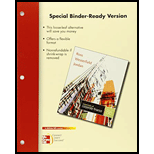
To determine: The yield to maturity and the current yield
Introduction:
Yields refer to the
The current yield of the bond is the annual coupon of the bond divided by the
Answer to Problem 22QP
The yield to maturity of the bond is 11.76 percent. The current yield on the bond is 11.29 percent.
Explanation of Solution
Given information:
The following is the information regarding the bond issued by Company IoU. The piece of information is available in today’s newspaper dated April 15, 2013. Assume that the face value of the bond is $1,000 and the coupon payments are semiannual.
Table 1
| Company Ticker | Coupon | Maturity | Last price | Last yield | EST Volume (000's) |
| IoU (IoU) | 9.75 | April 15, 2027 | 86.352 | ?? | 1,827 |
The formula to calculate annual coupon payment:
The formula to calculate the current price:
The formula to calculate the current yield:
The formula to calculate the yield to maturity:
Where,
“C” refers to the coupon paid per period
“F” refers to the face value paid at maturity
“r” refers to the yield to maturity
“t” refers to the periods to maturity
Compute the annual coupon payment:
Hence, the annual coupon payment is $97.5.
Compute the current price of the bond:
The face value of the bond is $1,000. The last price is 86.352% of the face value of the bond as per Table 1.
Hence, the current price of the bond is $863.52.
Compute the current yield:
Hence, the current yield is 11.29 percent.
Compute the semiannual yield to maturity of the bond as follows:
The bond pays the coupons semiannually (Assumption). The annual coupon payment is $97.5. However, the bondholder will receive the same is two equal installments. Hence, semiannual coupon payment or the 6-month coupon payment is $48.75
The remaining time to maturity is 14 years
Finding “r” in Equation (1) would give the semiannual yield to maturity. However, it is difficult to simplify the above the equation. Hence, the only method to solve for “r” is the trial and error method.
The first step in trial and error method is to identify the discount rate that needs to be used. The bond sells at a premium in the market if the market rates (Yield to maturity) are lower than the coupon rate. Similarly, the bond sells at a discount if the market rate (Yield to maturity) is greater than the coupon rate.
In the given information, the bond sells at a discount because the market value of the bond is lower than its face value. Hence, substitute “r” with a rate that is greater than the coupon rate until one obtains the bond value close to $916.45.
The coupon rate of 9.75 percent is an annual rate. The semiannual coupon rate is 4.875 percent
The attempt under the trial and error method using 5.881 percent as “r”:
The current price of the bond is $863.47, when “r” is 5.881 percent. This value is close to 863.52. Hence, 5.881 percent is the semiannual yield to maturity.
Compute the annual yield to maturity:
Hence, the yield to maturity is 11.76 percent.
Want to see more full solutions like this?
Chapter 6 Solutions
ESSENTIAL OF CORP FINANCE W/CONNECT
 Essentials Of InvestmentsFinanceISBN:9781260013924Author:Bodie, Zvi, Kane, Alex, MARCUS, Alan J.Publisher:Mcgraw-hill Education,
Essentials Of InvestmentsFinanceISBN:9781260013924Author:Bodie, Zvi, Kane, Alex, MARCUS, Alan J.Publisher:Mcgraw-hill Education,

 Foundations Of FinanceFinanceISBN:9780134897264Author:KEOWN, Arthur J., Martin, John D., PETTY, J. WilliamPublisher:Pearson,
Foundations Of FinanceFinanceISBN:9780134897264Author:KEOWN, Arthur J., Martin, John D., PETTY, J. WilliamPublisher:Pearson, Fundamentals of Financial Management (MindTap Cou...FinanceISBN:9781337395250Author:Eugene F. Brigham, Joel F. HoustonPublisher:Cengage Learning
Fundamentals of Financial Management (MindTap Cou...FinanceISBN:9781337395250Author:Eugene F. Brigham, Joel F. HoustonPublisher:Cengage Learning Corporate Finance (The Mcgraw-hill/Irwin Series i...FinanceISBN:9780077861759Author:Stephen A. Ross Franco Modigliani Professor of Financial Economics Professor, Randolph W Westerfield Robert R. Dockson Deans Chair in Bus. Admin., Jeffrey Jaffe, Bradford D Jordan ProfessorPublisher:McGraw-Hill Education
Corporate Finance (The Mcgraw-hill/Irwin Series i...FinanceISBN:9780077861759Author:Stephen A. Ross Franco Modigliani Professor of Financial Economics Professor, Randolph W Westerfield Robert R. Dockson Deans Chair in Bus. Admin., Jeffrey Jaffe, Bradford D Jordan ProfessorPublisher:McGraw-Hill Education





